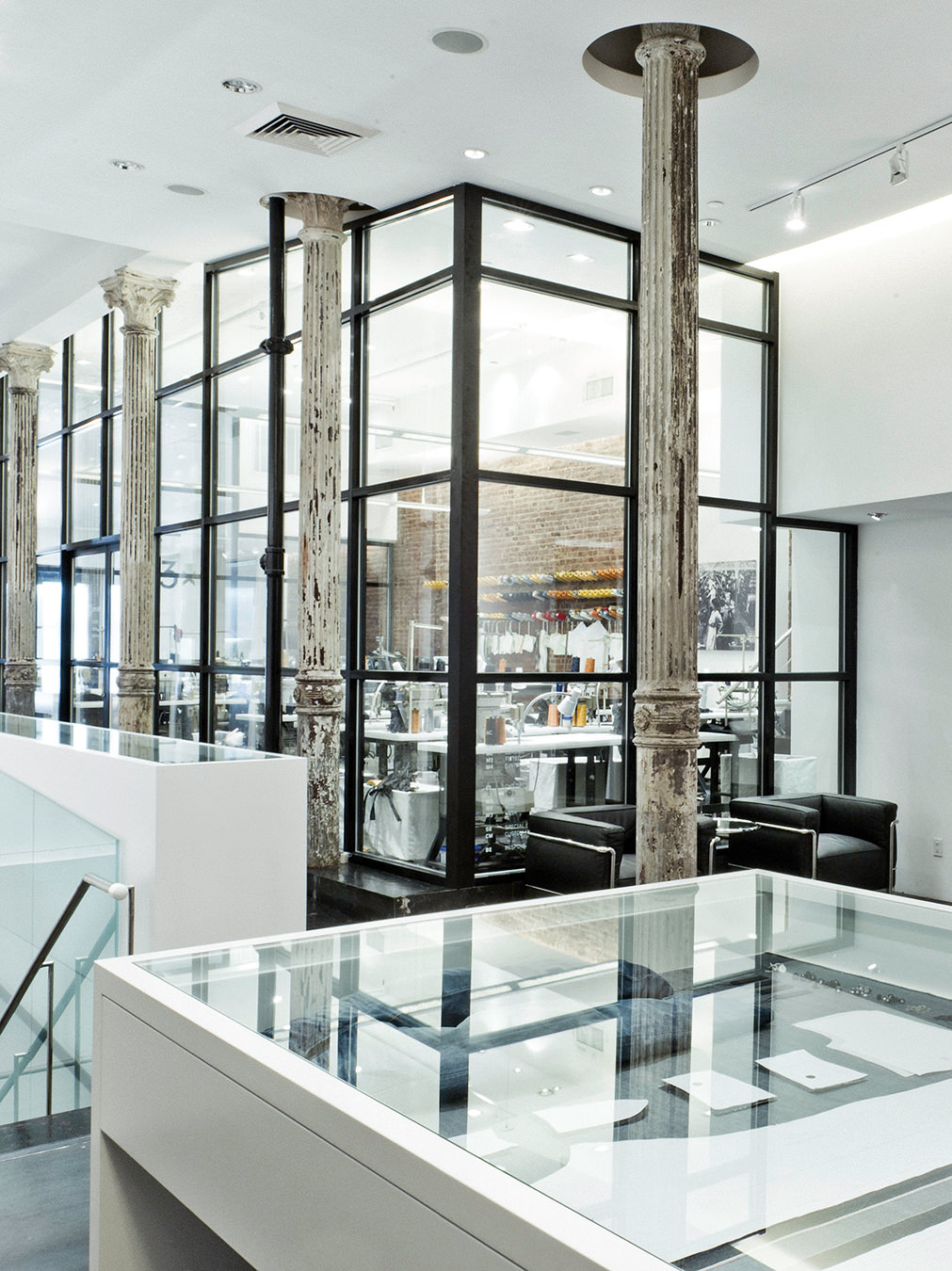NYC Artist Matthew Fisher’s First Lighting Collection Is Set in Stone
The maker of remarkable stone objects has collaborated with Brooklyn’s Remains Lighting Company for a myth-inspired collection.
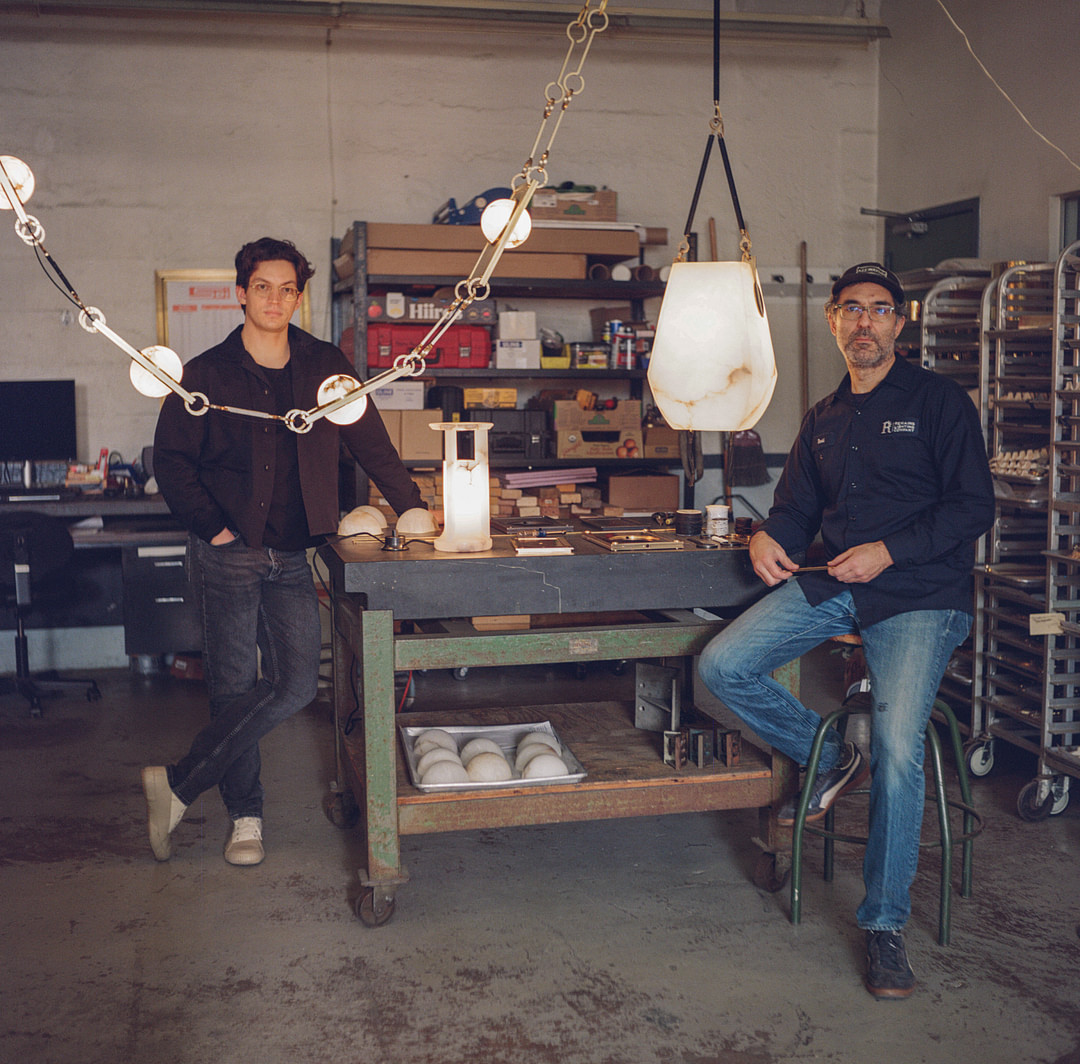
Matthew Fisher is best known for his remarkable work in stone. The NYC artist crafts classically informed, sculptural pieces out of marvellously bold materials like rainbow onyx and paonazzo. But lately, the rising star is channelling a new medium: light.
For his first lighting collection, Fisher has collaborated with Brooklyn’s Remains Lighting Company to launch Ariadne, seven category-breaking pieces inspired by Greek myth of Ariadne, a Cretan princess who gave Theseus a string of glittering jewels to help navigate a dark labyrinth in pursuit of the Minotaur.
Fisher hadn’t intended to step into lighting so soon. He’d originally connected with Remains, which made a name for itself by expertly restoring antique light fixtures, to help transform a single stone object into a lamp. Resonance between the two makers fuelled their collaborative spirit.
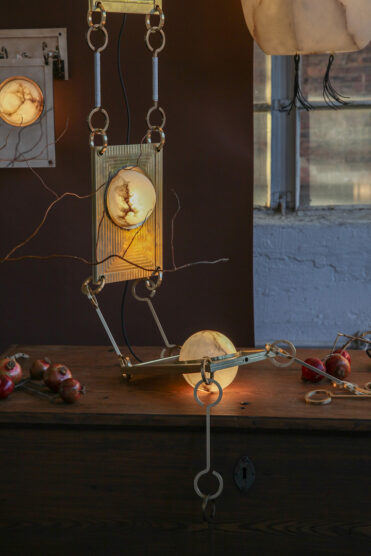

“It seems we’re both drinking at the well of classical inspiration and both love simple, rich materials like stone and brass and leather, so there’s an obvious resonance between our work,” says David Calligeros, the founder of Remains Lighting Company. One idea led to another, and soon a single stone object multiplied into a complete and radiant collection.
While the story of Ariadne makes for scintillating source material, the collection ultimately highlights the material itself, capturing the sublime quality of illuminated alabaster. “Alabaster as a material is truly a gift,” Fisher explains. “Composed of finely interwoven gypsum crystals, the material is so soft that it can be carved away by hand.”
Expressed through seven unique fixtures, alabaster takes shape mostly as ethereal orbs not unlike miniature moonscapes, sometimes harnessed by antique brass surrounds (other finishes include oil-rubbed bronze and German silver). Its ability to be carved so thin, to a level that would make other metamorphic stones Fisher works with crack, shines throughout the collection. “It is at this thinness that the material comes to life and displays its translucent properties,” Fisher adds. “Unlike other calcium-based stones that can be illuminated, alabaster has depth when illuminated.”
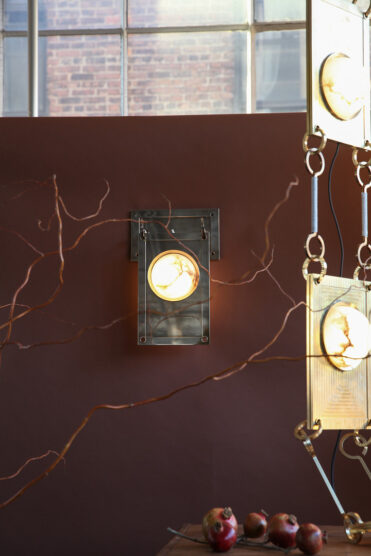
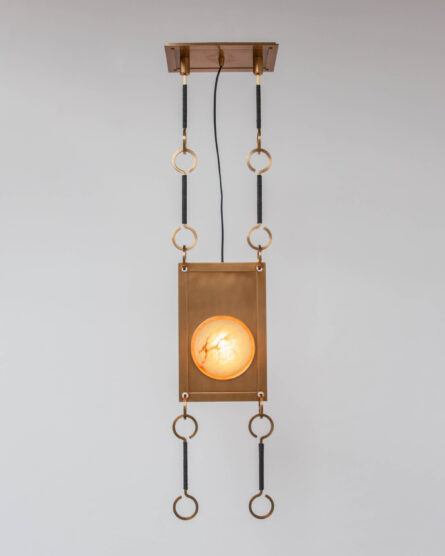
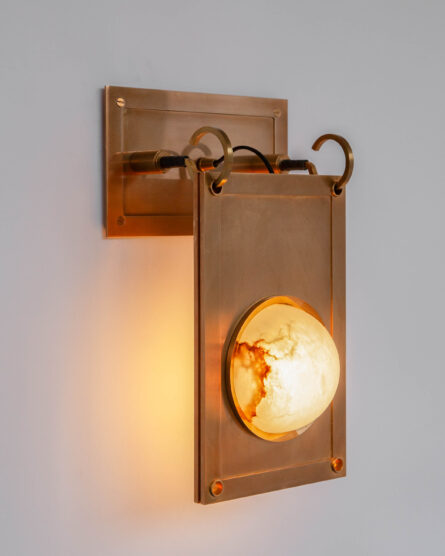
It’s perhaps most visible in the Nima Drop Chandelier, a series of orbs set in machined brass slabs. Each segment is attached with leather-wrapped hooks, a clear reference to Ariadne’s thread of jewels. But the object is perhaps more dynamic than your typical chandelier (the installation of this piece is refreshingly open to interpretation). Additional slabs can be added like links on a bracelet, while the whole fixture can be suspended straight from the ceiling, draped across a table, or even styled in some other way entirely.
“We shoehorn these works into the formal [and] functional categories of ‘chandelier,’ ‘sconce,’ and so on, but only because we haven’t invented the correct vocabulary,” Fisher says. “They are unlike any other fixtures we’ve seen.”
That same notion is captured in the Nima Table Light, where a single slab of machined brass harnesses an alabaster orb and rests at an angle—a piece aptly described as a tabletop sculpture, more expressive than a purely functional light source. Other versions, the Nima Sconce and the Nima Pendant, suspend alabaster vertically from the wall and ceiling, while a Kalathi Lantern takes shape as a delicately strung “basket” shade in midair (again referencing the story of Ariadne, who wove baskets to store grapes for the Greek god Dionysus).
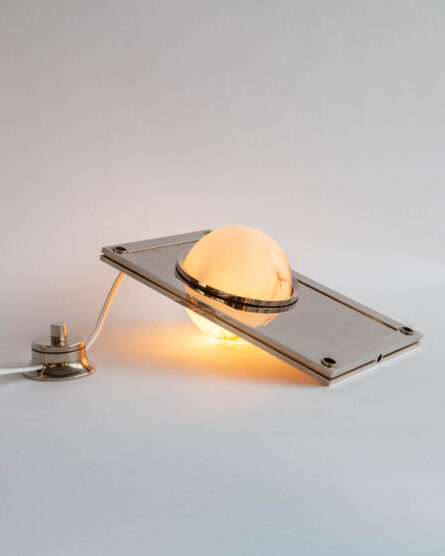
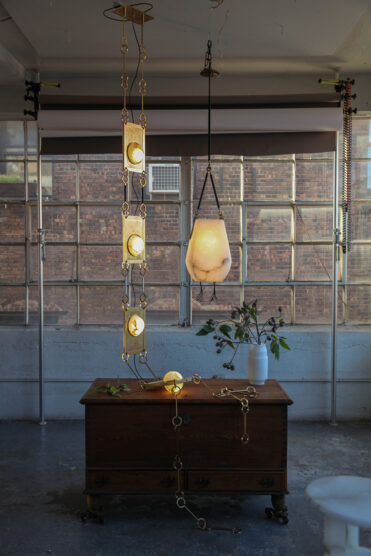
Mesmerizing and bordering on museum-worthy, each piece captures an otherworldly quality of alabaster that’s hard to take your eyes off of. “It is like looking through water and seeing movement, becoming ever more obscured the deeper you gaze into the material,” Fisher says.
An ethereal glow by way of natural stone? Fisher has found his light.


